MOST literary pilgrimages (think Wordsworth in the Lakes, Brontes in the moors of West Yorkshire) promise spectacular landscapes to reflect the author’s work. Yet, curiously, for one of our finest landscape writers, this is not the case.
95 year old Barney has turned the tiny roadside hut into a place of pilgrimage
Seamus Heaney, who died in 2013, Nobel prizewinner, author of Ireland’s favourite poem in which he remembers peeling potatoes with his mother in their Mossbawn farmhouse, was brought up in the flat sectarian heartland of Ulster, a Catholic child with Protestant neighbours, acutely aware of boundaries.
His poems celebrate introspection and reticence while eloquently hymning the details of his locale, evoking Irish place names Anahorish and Broagh in defiance of the English Ascendancy demesnes and four-square towns which sit cheek by jowl with the bogland farms.
As yet the Heaney tourist industry is in its infancy. A £4m visitor centre and archive at Bellaghy is on the way. For a more intimate, personal tour we headed to Laurel Villa in nearby Magherafelt. Home to Eugene and Gerardine Kielt, a comfortable town house with excellent accommodation, it is also a shrine to modern poetry, specifically Heaney, who gave it his blessing.

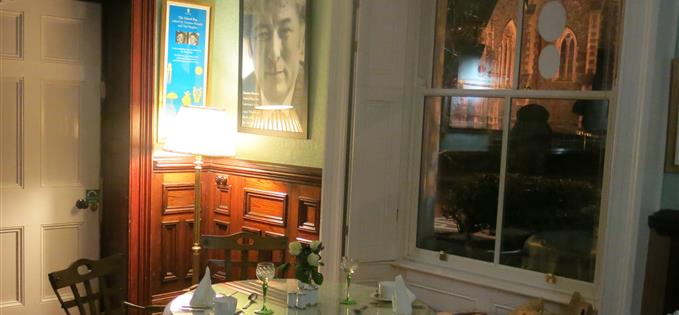
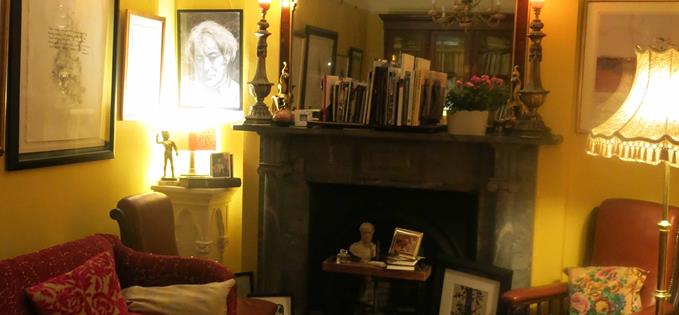
Rooms are dedicated to poets (we were delighted to be given the Heaney attic) and walls are covered in photographs of poets and canvas transcriptions of their poems. There is an extensive archive of work by and about Heaney, including an editorial he wrote as a student for the Queen’s University Belfast magazine, proposing that jive moves should be incorporated into traditional Irish dancing.
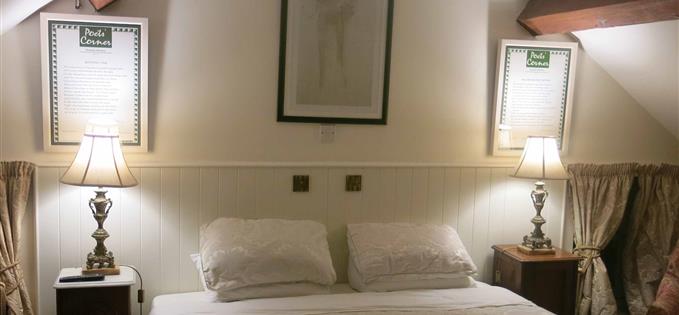 Our Seamus Heaney attic room
Our Seamus Heaney attic roomEugene, a keen local historian and Blue Badge guide, offers tours of Heaney country, punctuated by readings of poems relating to specific places (Heaney’s own voice off an iPhone). A knowledgeable guide, he pointed out things which we would easily have missed – the sandy lane which took the poet to his primary school, Mossbawn, the farm house in which he was brought up and the road in front of it where his little brother was tragically killed, prompting the deeply moving poem Mid-Term Break.
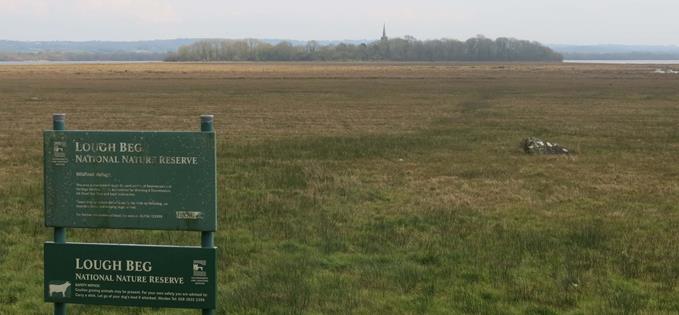 Bogland – Lough Beg towards Church Island
Bogland – Lough Beg towards Church IslandWe saw Church Island, a folly near Lough Beg built in the 1700s by Bishop Hervey of Down, known jocularly as the Edifying Bishop, not on account of his sermons but because he liked to commission showy buildings.
Although Northern Ireland is now much more peaceful, there is evidence everywhere of a violent past. We began our tour on the main street of Magherafelt opposite what had been the bus station before it was bombed (recalled in Heaney’s poem Two Lorries), we were shown sites of sectarian killings and were acutely aware of the small scale of a place where everyone was known to everyone else.
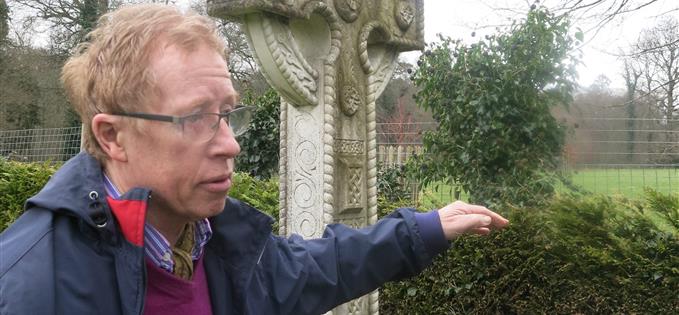 Our host and guide Eugene Kielty on the tour
Our host and guide Eugene Kielty on the tourAmong the highlights of a very detailed exploration lasting close on five hours was the striking commemorative statue outside Bellaghy Bawn of a turfcutter, sculpted to look as if made from slices of turf, in memory of Heaney’s most famous poem, Digging. Unforgettable was Barney Devlin, whose family owned the forge commemorated in Door Into The Dark. 95 year old Barney has turned the tiny roadside hut into a place of pilgrimage with original farrier’s tools on one side and a tiny living space for the family on the other.
 Barney Galvin outside the Forge; below giving the anvil some hammer
Barney Galvin outside the Forge; below giving the anvil some hammer
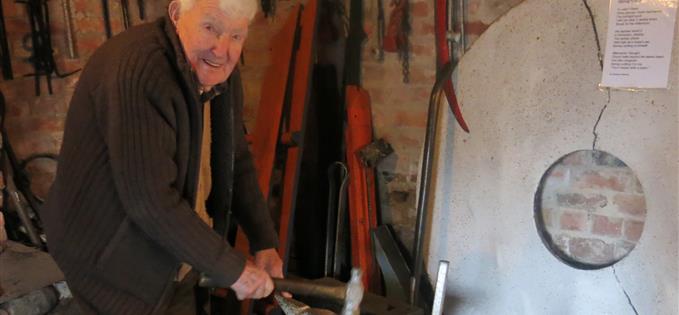
Walking from the brightly lit road with its fast traffic into the forge is to exchange the 21st century for a timeless past. Our final stop was at Bellaghy churchyard to visit Heaney’s remarkably modest grave – freshly dug earth surrounded by pebbles with a simple epitaph.
Eugene and Gerardine hold an annual poetry festival each September in their spacious back yard and atmospheric sloping garden. But if poetry is not your thing there are still lots of other reasons to visit Laurel Villa. Gerardine’s afternoon teas are ‘legendary’ according to the Good Hotel Guide and the couple also run an ancestry-tracing service. If you want to combine comfort with culture Laurel Villa is a rare find in this part of Ireland.
Fact file
Staying there
Laurel Villa Town House, 60 Church Street, Magherafelt BT45 6AW. 028-7930 1459, www.laurelvilla.com.
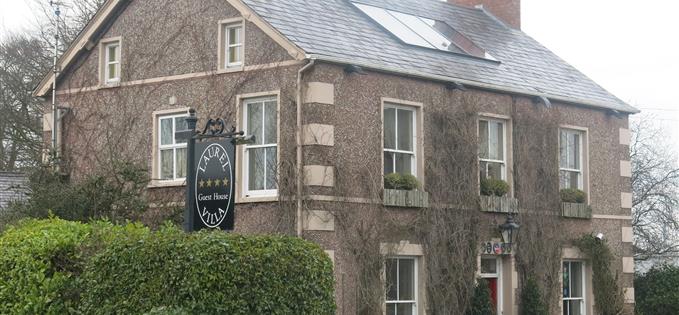
Getting there
Theresa Sowerby took her own car to Ireland via the the Stena Lines Liverpool (Birkenhead)-Belfast ferry service. The return trip costs from £129 each way. It takes eight hours, so if you are going overnight you might want to book a cabin. Very handy access to motorways once you get off at Belfast. The Stena Lagan has been recently refurbished and boast a smart bar/restaurant the Metropolitan Grill and Bar plus a further comforable lounge space, Barista Coffee. The Stena Plus lounge is available as part of the Premium fare, which also includes express boarding and disembarkation, or you may upgrade when onboard for only £20 per person (lounge access only). On board offers on designer fragrances, electronics, gifts and confectionery, save up to 50 per cent on high street prices.
For further details and to book visit this link.
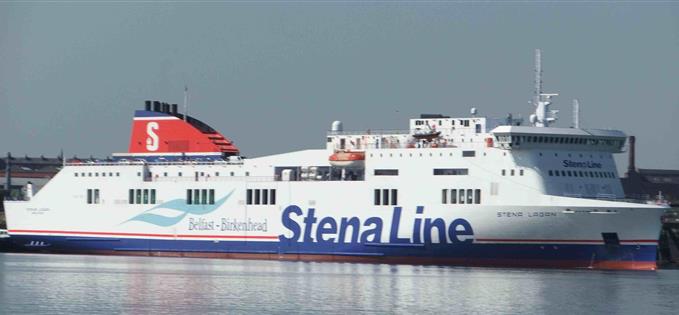
For Northern Ireland tourism information visit this link.









